Castile or Castille is a territory of imprecise limits located in Spain. The use of the concept of Castile relies on the assimilation of a 19th-century determinist geographical notion, that of Castile as Spain's centro mesetario with a long-gone historical entity of diachronically variable territorial extension.

Valladolid is a municipality in Spain and the primary seat of government and de facto capital of the autonomous community of Castile and León. It is also the capital of the province of Valladolid. It has a population of 295,639 people.
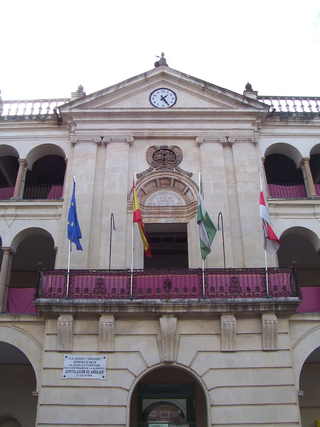
Andújar is a Spanish municipality of 38,539 people (2005) in the province of Jaén, in Andalusia. The municipality is divided by the Guadalquivir River. The northern part of the municipality is where the Natural Park of the Sierra de Andújar is situated. To the south are agricultural fields and countryside. The city proper located on the right bank of the Guadalquivir and the Madrid-Córdoba railway. In the past, Andújar was widely known for its porous earthenware jars, called alcarrazas or botijos, which keep water cool in the hottest weather, and were manufactured from a whitish clay found in the neighbourhood.
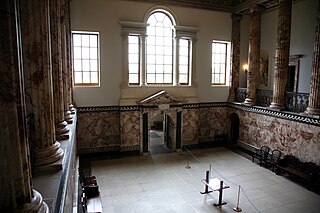
A Venetian window is a large tripartite window which is a key element in Palladian architecture. Although Sebastiano Serlio (1475–1554) did not invent it, the window features largely in the work of the Italian architect Andrea Palladio (1508–1580) and is almost a trademark of his early career. The true Palladian window is an elaborated version. Both the Venetian window or Serlian window and the Palladian window were inspired by Hellenistic and Roman examples which are part of the classical tradition and related to prestige and sacredness.

Botellón is a Spanish activity when people congregate in public areas to socialize while drinking alcohol. The activity is popular among teenagers and young adults partly in response to rising drink prices at bars or clubs, and partly because more people can meet in one place. Botellón is not an alternative to typical nightlife, but is rather an economical way to drink with people before going out to bars, discos, or clubs.
The Mocoví language is a Guaicuruan language of Argentina spoken by about 3,000 people, mostly in Santa Fe, Chaco, and Formosa provinces.

Martín Almagro Gorbea is a Spanish prehistorian.

Diego López II de Haro called the Good or the Bad. Son of Lope Diaz I de Haro, count of Nájera and of countess Aldonza. He was a first rank magnate in the kingdom of Castile under King Alfonso VIII (1158–1214). He played a decisive role in the rise of the Haro dynasty, as well as in the construction of the nobiliary identity of his group, who was to dominate the Castilian political society during the whole 13th century. A publicity strife around this key figure between his successors and the monarchy, in a moment of deep political troubles, led to the elaboration of his dark image and his golden legend at the end of the 13th century, and the invention of his opposite nicknames.
Pablo González Cuesta is a Spanish writer born in Seville (1968). Until the age of three, he lived in Sao Paulo (Brazil). Later, his family moved to Barcelona and then to Madrid where he remained until 2001. He also resided in Punucapa, close to Valdivia (Chile). Actually, back in Seville (Spain).
Francisco Pérez de Valenzuela, was a nobleman of the Kingdom of Spain. He traveled to the Americas, where was appointed as military and navy leader by the Spanish Crown in the Viceroyalty of Peru, being captain in some battles. During his last days he was a Royalist politician nominated and elected Corregidor so called City Mayor in Valdivia, city-port founded by his countryman named Peter of Valdivia conqueror of Chile. There he did a good job making strategies protecting southern cities, forts and ports, and avoiding attacks by pirates. He also was a businessman like his father named Alonso Pérez de Valenzuela y de la Cava.

Oriol Bohigas i Guardiola was a Spanish architect and urban planner, known for his work in the modernization of Barcelona.
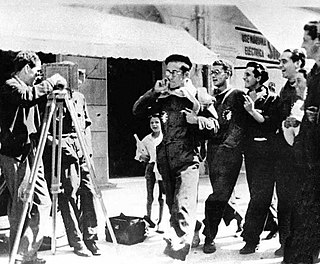
Gonzalo Menéndez-Pidal was a Spanish historian, cartographer, cinematographer, photographer, and archivist. He was the youngest historian to ever be admitted to the Spanish Royal Academy of History. He was the son of Ramon Menendez Pidal and Maria Goyri de Menendez Pidal, who was the first woman to officially graduate from a Spanish university, the Universidad de Madrid.
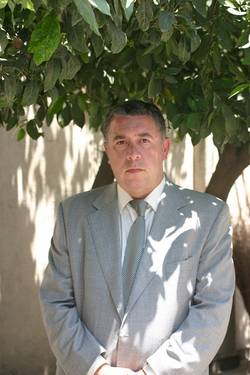
José Rafael Valles Calatrava is a Spanish researcher and professor of Literary Theory and Comparative Literature at the University of Almería. His interests lie in the fields of narratalogy, semiotics and crime fiction. He has published extensively on those fields and has written books such as Diccionario de teoría de la narrativa [Dictionary of Narrative Theory] and Teoría de la narrativa [Narrative Theory]. Valles Calatrava has taught at the University of Almería and the University of Granada since 1989.
José Antonio Alonso Navarro is a philologist, university professor of English and English literature, and European literature in general. In addition, he is a medievalist, a translator, and a writer. He was born in Madrid (Spain) in 1965. Navarro holds a BA in English Philology from the Complutense University of Madrid (Spain) and a PhD in English Philology from the Coruña University (Spain). He wrote a doctoral dissertation about the afterlife in Medieval Europe, and included a complete comparative analysis of two medieval texts on the afterlife within the same genre. He was awarded the "CUM LAUDE" accolade.
Sabine MacCormack (1941–2012) was a German-American historian of Late Antiquity and Colonial Latin America.
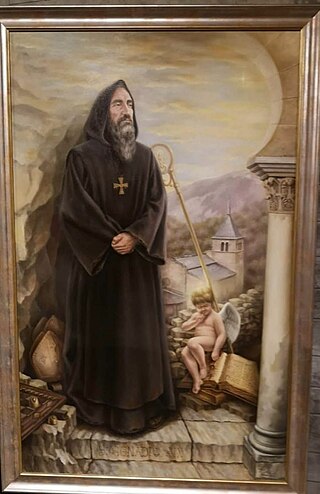
Genadio of Astorga or popularly San Genadio was a Spanish Benedictine monk, hermit and bishop of Astorga between 899 and 920. He also founded several monasteries in El Bierzo. He made the Caves of San Genadio and retired there with other priests in periods of penance.

José Antonio Sosa Diaz-Saavedra is a Spanish architect, university professor and researcher. He is a member of the Royal Canarian Academy of Fine Arts of St. Michael Archángel.

Liliana Palaia Pérez is an Argentine-born architect and painter who resides and works in Valencia, Spain.

The Luxburg-Carolath Cemetery, commonly known as El Cuadrado is a privately owned cemetery located in Maracaibo, Zulia, Venezuela. It is one of the oldest operating cemeteries in the country, and has over 10,000 interments.

Pedro Muguruza Otaño (1893–1952) was a Spanish architect and Falangist politician.



















